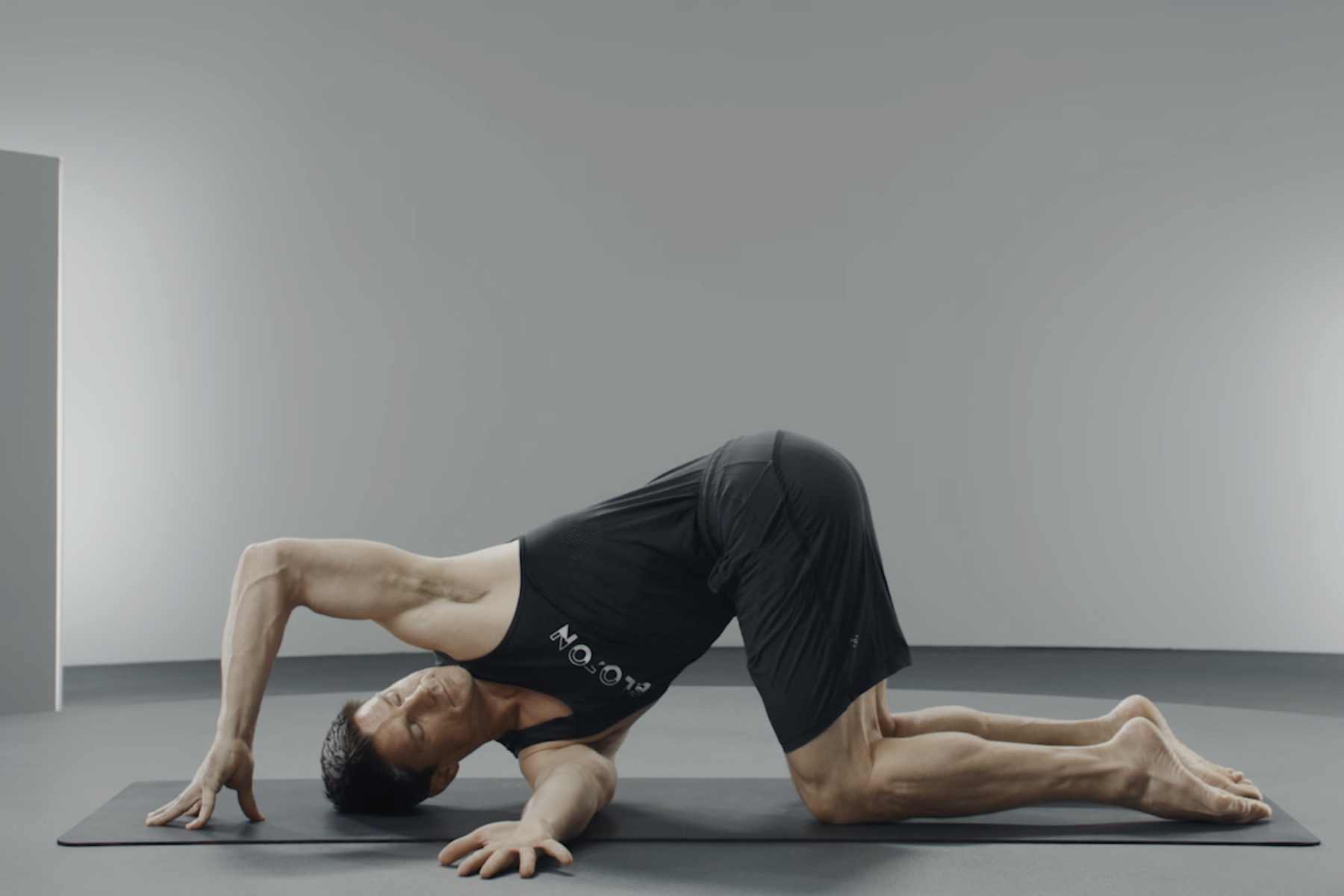
Studio4/iStock / Getty Images Plus via Getty Images
Why You Need to Build Shoulder Mobility—and 6 Exercises to Do Just That
These joints are more essential to your athletic performance than you may think.
By Alyssa Sparacino•
Why Is Shoulder Mobility So Important?
How to Test Your Shoulder Mobility
6 Shoulder Mobility Exercises
How to Keep Your Shoulders Healthy
Your shoulders—including the muscles and joints that stabilize them—are two of the most flexible areas of your body. That’s because they’re ball-and-socket joints, rotating in multiple directions to lift and reach overhead, out to the sides, as well as forward and backward.
But asking so much of your shoulders means that injuries or limitations are possible. Here’s what to remember when it comes to keeping them strong, stable, and mobile for many years to come.
Why Is Shoulder Mobility So Important?
It’s not just about your workout performance. Shoulder mobility is also essential for your everyday life. Think about how often you rotate your shoulder to put on a shirt, wash your hair, store dishes away on a high shelf, or turn around to your kid in the car.
When it comes to your fitness, “it's crucial for exercises like overhead presses or snatches,” says Peloton instructor Matty Maggiacomo. Bench presses, pull-ups, and certain yoga poses also rely on proper shoulder function, he adds.
Additionally, if you play sports such as pickleball, tennis, or basketball, you’ll need a good range of motion and strength in your shoulder to control your serve, swing, or shot, says Winnie Yu, a physical therapist and certified strength and conditioning specialist at Bespoke Treatments in New York.
Plus, healthy shoulder joints help prevent injuries, Yu says. “Without adequate shoulder mobility, you may begin to compensate at other joints surrounding the shoulder, such as the neck or cervical spine and mid back or thoracic spine,” she says. “Over time, these compensatory movements may increase a person’s risk of developing overuse injuries in the shoulders or surrounding areas.”
The Causes of Poor Shoulder Mobility
“Poor shoulder mobility often stems from bad posture, prolonged desk work, and repetitive motions like typing,” Matty says. When you spend long stretches in these hunched positions, over time, the muscles around your shoulder (e.g. biceps, and upper back) can shorten and tighten, Yu says, potentially leading to shoulder mobility limitations.
Overuse injuries from repetitive motions (e.g. throwing, lifting, reaching, and swinging) can also cause painful shoulder problems such as bursitis, rotator cuff tears, or arthritis, Yu says.
The good news? Building mobility in your shoulder and the surrounding areas, as well as learning how to move efficiently in life and the sports you enjoy, can greatly reduce your risk of injury, she says.
How to Test Your Shoulder Mobility
An evaluation by a physical therapist will give you the clearest picture of your current active and passive range of motion. At home, there’s a simple test you can use for a sense of where your shoulder mobility stands, Matty says.
Begin standing with your back against a wall.
Lift your arms overhead, one at a time. Try to touch the wall without arching your back or moving your body.
You may not be able to reach the wall at all without straining or pivoting. You also may notice a difference in your range of motion between each shoulder. Either scenario means your shoulder mobility might need some work, Matty says. Aside from the wall test, you may even notice some tension or impingement when doing arm or shoulder circles during a warm-up, which would also indicate limited mobility, he adds.
You can also test where your range of motion is compared to the maximum or goal range for that angle, Yu says. If you notice pain during any movement, stop.
Abduction: Lifting your arm to the side and up (goal range: 180 degrees).
Flexion: Raising your arm in front of you (goal range: 180 degrees).
Extension: Raising your arm behind you (goal range: 45-60 degrees).
External rotation: Lifting your arm to the side and forming an L shape with your palm facing the ground, then rotating your forearm so that your fingertips point toward the ceiling (goal range: 90 degrees).
Internal rotation: Lifting your arm to the side and forming an L shape with your palm facing the ground, then rotating your forearm so that your fingertips point toward the ground (goal range: 90 degrees).
6 Shoulder Mobility Exercises
If you’re looking to improve your range of motion, these expert-recommended shoulder mobility exercises can help. Make sure to practice them consistently over time.

1. Thread the Needle
Start in a quadruped position with your knees under your hips and your palms under your shoulders.
Twist your torso to the right as you thread your left arm under your right arm. Your left palm should face up.
Continue to reach your left arm out to the side. Place your left shoulder and your head on the ground for support.
For a deeper stretch, place a foam roller vertically under your left arm.
Repeat on the opposite side.

Tassii/E+ via Getty Images
2. Cross-Body Shoulder Stretch
Start in a standing position. Reach your right arm across your body.
With your left hand, grab your right arm just above the elbow to gently guide it a bit further across your body. Hold here.
Repeat on the opposite side.
3. Stiff Shoulder Rotations
Begin in a standing position. Hold a broomstick, PVC pipe, or a taut resistance band above your head with straight arms. Your arms should be spaced a bit wider than shoulder-distance apart.
Slowly move the stick behind your head without bending your arms. (Stop when you can’t go any further.)
Slowly rotate the stick or band back up overhead and in front of your body.
Continue to repeat this movement pattern.
4. YTWL
Begin by lying prone on the floor with your face down.
Raise both of your arms to 45-degree angles, making a Y shape with your body.
Slide them down to a 90-degree angle to make a T shape.
Bend your elbows in toward your sides to form a 45-degree angle, making a W shape.
Lift your elbows to form 90-degree angles in a field-goal position. They should each make an L shape. Internally rotate your shoulders, bringing your fingertips to point down.
Repeat this movement pattern. You can also do this shoulder mobility exercise lying face up.
5. Doorway Pec Stretch
Stand in a doorway with your arms by your sides. Raise your right hand to shoulder level. Place that hand on the wall.
Gently rotate your body toward the left. Hold this position for 15 to 30 seconds. You should feel a stretch in your chest.
Repeat on the opposite side.

Nitat Termmee/Moment via Getty Images
6. Overhead Triceps Stretch
Start in a standing position. Reach your right arm overhead. Bend your right arm. Your right hand should stretch toward your left shoulder blade.
Gently grab your right elbow with your left hand.
Hold this position. To slightly increase the stretch in your right triceps, lean to the left.
Repeat on the opposite side.
How Often Should You Work On Shoulder Mobility?
Aim for two to three weekly sessions of shoulder mobility work, Matty says. You don’t need them to be extensive to see improvement. Just five to 15 minutes of shoulder mobility exercises, whether that’s during a warm-up or as its own workout, is all it takes.
“Do dynamic stretches before workouts, [and] static stretches after,” he says. And remember: “Consistency is key, and listen to your body to avoid overdoing it.”
How to Keep Your Shoulders Healthy
Beyond shoulder mobility exercises, you can make strategic choices in your workouts and lifestyle to keep these joints healthy and happy. Create an ergonomic desk set-up for work to avoid repetitive motions that could damage your joints, Yu suggests. Take a timeout from your phone and other devices to prevent all-day slouching that can lead to muscle tightness and imbalance, she says. And finally, move well and with proper form during your workouts and other sports to prevent injuries, she adds.
Range of motion and strong muscles go hand in hand when it comes to the health of your shoulders, Yu says. “As with any other joint in your body, it’s important to include a combination of mobility and strength work into your routine to keep the shoulders healthy,” she says.

Peloton App
Access thousands of classes with no equipment needed.
This content is for informational and educational purposes only and does not constitute individualized advice. It is not intended to replace professional medical evaluation, diagnosis, or treatment. Seek the advice of your physician for questions you may have regarding your health or a medical condition. If you are having a medical emergency, call your physician or 911 immediately.
Level up your inbox.
Subscribe for a weekly dose of fitness, plus the latest promos, launches, and events.
By providing your email address, you agree to receive marketing communications from Peloton.
For more about how we use your information, see our Privacy Policy.






